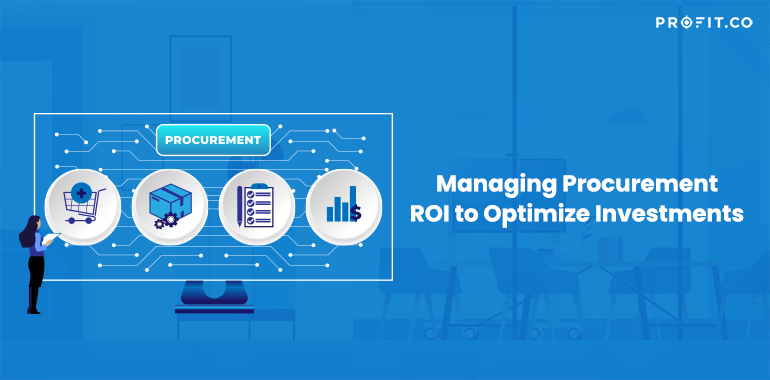Introduction
Learning the nuances of the untapped potential of procurement has become imperative in the cutting-edge business world. With organizations fiercely vying for a competitive edge, the quest for increased profitability and operational efficiency has intensified. One area that holds significant potential for improving the bottom line is procurement. Efficient procurement practices guarantee the timely delivery of essential goods and services and unleash a cascade of cost savings and strategic value creation. Effective procurement practices ensure the timely availability of goods and services and contribute to cost savings and strategic value creation. Today, in this engrossing blog post, let’s discuss how to maximize procurement ROI (Return on Investment), revealing invaluable strategies to gear up its full potential in your business.
Defining Procurement ROI
Procurement ROI is a financial metric that measures the return on investment generated through procurement activities. It evaluates the effectiveness of procurement strategies in terms of cost savings, process efficiencies, and value creation. Organizations can make informed decisions and optimize their procurement practices by assessing the financial impact of procurement initiatives.
Think of business as a good game. Lots of competition and a minimum of rules. You keep score with money.
The Procurement ROI Formula
Let’s consider a real-time example to illustrate the formula for Procurement ROI
Company XYZ, a manufacturing firm, implemented a new procurement strategy to reduce its annual costs and maximize its return on investment. After analyzing their procurement processes, they identify areas where they can negotiate better contracts, optimize supplier relationships, and streamline purchasing procedures.
Over a year, Company XYZ successfully negotiates more favorable terms with their suppliers, leading to cost savings of $500,000. Additionally, they invest $2 million in their procurement operations, including software upgrades, staff training, and process improvements.
To calculate the Procurement ROI, we use the formula

In this example, the annual cost savings are $500,000, and the annual cost of procurement is $2 million.
Procurement ROI = $500,000 / $2,000,000 = 0.25 or 25%
Company XYZ’s procurement ROI is 25%. This means that for every dollar invested in their procurement operations, they achieve a return of $0.25 or 25 cents. The higher the Procurement ROI, the more effectively the company manages its procurement processes to generate cost savings and strategic value.
By applying this formula, organizations can quantitatively assess the impact of their procurement efforts and measure the ROI generated.
Discover the transformative power of Procurement ROI today!
Transforming Cost Savings Strategies into OKRs
Objective: Enhance the return on investment in procurement.
Key Result 1: Increase the spend under management score from 7 to 9
Initiative: Introduce an advanced procurement software solution that allows for better spend visibility, tracking, and control across all departments and locations
Key Result 2: Reduce the overall cost of procurement from $80 to $70 by eliminating the need to hire additional staff
Initiative: Conduct regular supplier reviews to identify opportunities for cost reduction, renegotiate contracts, and negotiate favorable terms and pricing agreements.
Key Result 3: Maintain unmanaged spending to be less than 5% of the total procurement cost
Initiative: Conduct training sessions to educate employees on procurement policies, the importance of spending control, and the benefits of adhering to established guidelines.
Key Result 4: Increase the cost savings from 6% to 12% by ensuring SUM procurement spend dollar is under management
Initiative: Continuously analyze spending patterns, benchmark against industry standards, and identify areas for potential savings, such as consolidating suppliers or renegotiating contracts.
Understanding Procurement ROI
1. Cost optimization
Understanding procurement ROI helps identify areas of potential cost savings by evaluating the impact of procurement decisions on the organization’s bottom line.
2. Performance measurement
Procurement ROI serves as a key performance indicator (KPI) to assess the effectiveness and efficiency of procurement activities with insights into the value generated by procurement efforts and allows for benchmarking against industry standards.
3. Decision-making
Organizations can make data-driven decisions regarding procurement strategies, supplier selection, and investment priorities by calculating procurement ROI.
Conclusion
Procurement ROI offers organizations a holistic perspective on the financial benefits and value generated from their procurement endeavors. This metric allows businesses to fine-tune their procurement strategies, amplify cost savings, and make well-informed decisions. It’s crucial to recognize that calculating procurement ROI is an iterative process that demands continuous evaluation and adjustment to align with evolving business requirements, recent trends, and market dynamics. By embracing this approach, companies can stay agile and maintain a competitive edge in the dynamic procurement landscape.

